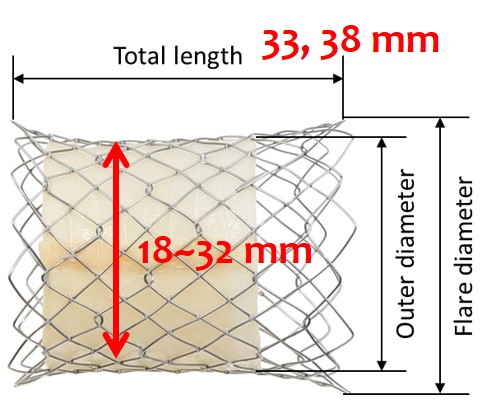Lots of interesting abstracts and cases were submitted for TCTAP & AP VALVES 2020 Virtual. Below are accepted ones after thoroughly reviewed by our official reviewers. Don¡¯t miss the opportunity to explore your knowledge and interact with authors as well as virtual participants by sharing your opinion!
* The E-Science Station is well-optimized for PC.
We highly recommend you use a desktop computer or laptop to browse E-posters.
ABS20191107_0001
| Others (STRUCTURAL HEART DISEASE) | |
| Pulsta¢ç Valve (Self-Expandable Percutaneous Pulmonary Valve with Knitted Nitinol-Wire Backbone Stent) Revealed Effectiveness and Safety from South Korean Multi-Center Study | |
| Gi-Beom Kim1, Jae Young Choi2, Seong-Ho Kim3, I-Seok Kang4, Younghwue Kim5 | |
| Seoul National University Children¡¯s Hospital, Korea (Republic of)1, Severance Hospital, Korea (Republic of)2, Sejong General Hospital, Korea (Republic of)3, Samsung Medical Center, Korea (Republic of)4, GangNeung Asan Hospital, Korea (Republic of)5 | |
|
Background:
Severe pulmonary regurgitation (PR) and associated right ventricular (RV) dilatation in native right ventricular outflow tract (RVOT) is challenging for percutaneous pulmonary valve implantation (PPVI). We report Korean multi-center study of self-expandable PPVI using Pulsta¢ç Valve.
|
|
|
Methods:
We reviewed procedure outcome of PPVI using Pulsta¢ç Valve for 25 patients at the five major structural cardiac centers in South Korea. Pulsta¢ç Valve was made from knitted nitinol-wire backbone with tissue valve using porcine pericardium after multiple steps of tissue engineering including decellularization and alpha-galactosidase treatment.
|
|
|
Results:
Twenty-five patients underwent total correction for right ventricular outflow tract disease (Tetralogy of Fallot in 21 patients, pulmonary atresia in 3 patients and Fallot-type double outlet right ventricle in 1 patient) previously and showed severe PR (PR fraction: 45.5 ¡¾ 6.9%) and enlarged RV volume (indexed RV end-diastolic volume was 169.7 ¡¾ 13 mL/m2). Their median age at PPVI was 20 years old (range: 11-38). At the targeted landing zone, 11 patients were implanted with 26 mm diameter Pulsta¢ç Valve, 12 patients were implanted with 28 mm diameter Pulsta¢ç Valve (Figure 1) loaded in the 18 French delivery catheter. Two other patients were implanted with 32 mm diameter Pulsta¢ç Valve loaded in the 20 French delivery catheter (Figure 2). There were no significant peri-procedural complications in all patients. After procedure, there was no significant pulmonary stenosis or PR from cine-angiography and echocardiography in all the patients. Chest X-ray showed good valve position at targeted landing zone. All the patients completed 6 months follow-up after PPVI and showed decreased indexed RV end-diastolic volume from 169.7 ¡¾ 13 to 126.9 ¡¾16.9 mL/m2 from cardiac MRI. (Figure 3)
   |
|
|
Conclusion:
Korean multi-center study of self-expandable PPVI using Pulsta¢ç Valve was successfully finished with short-term effectiveness and without procedural and device-related serious complications in all the patients.
|
|